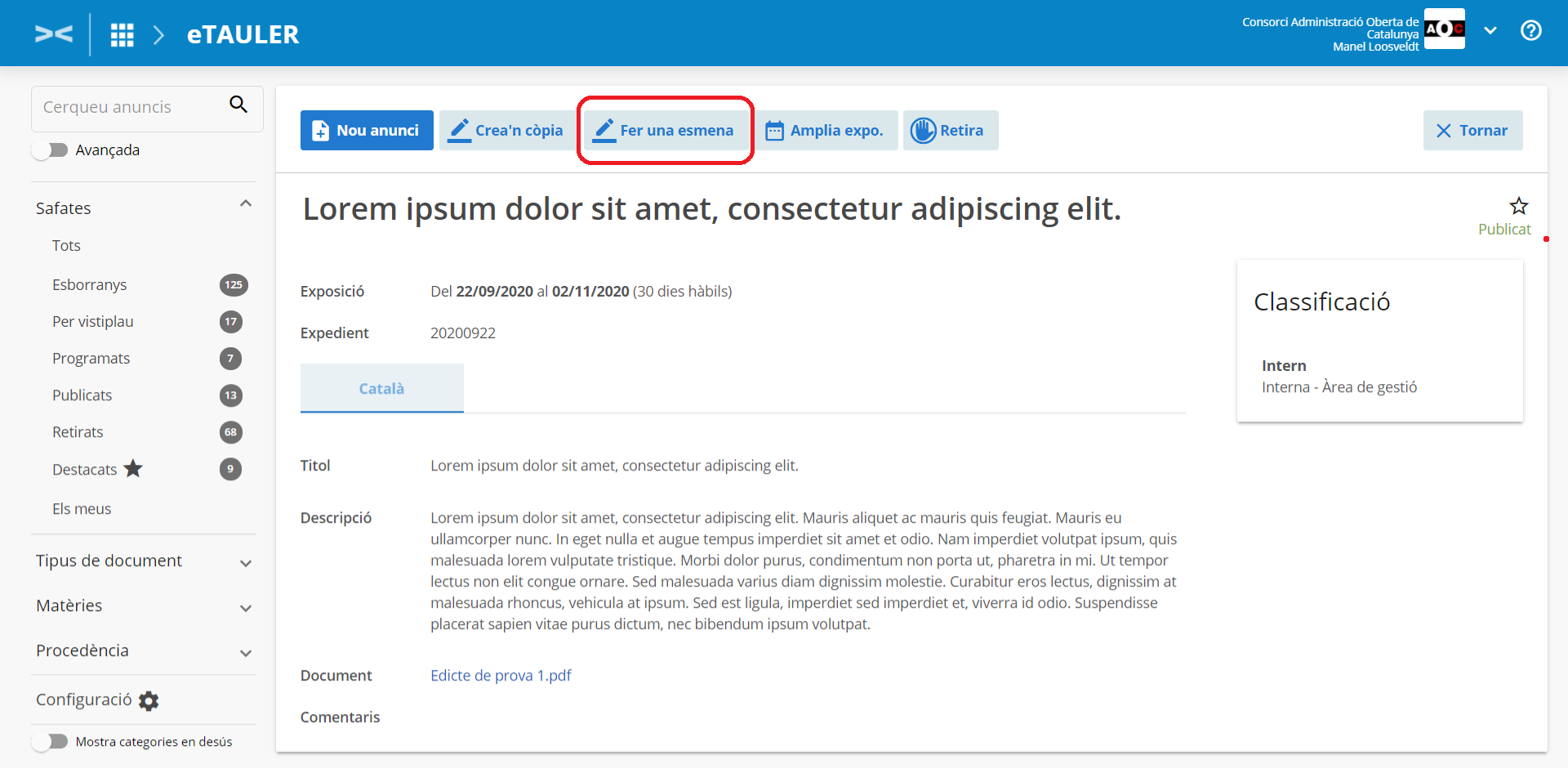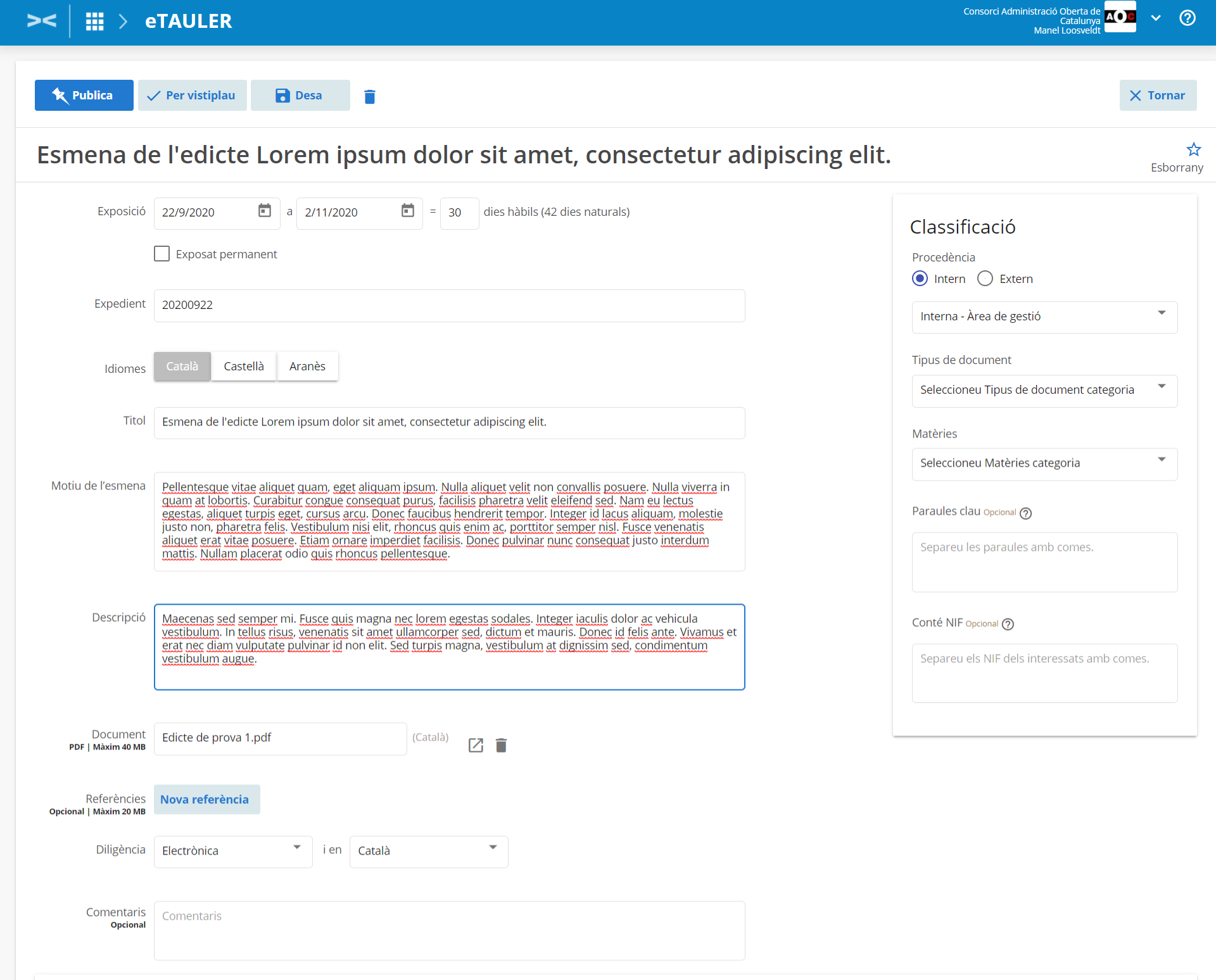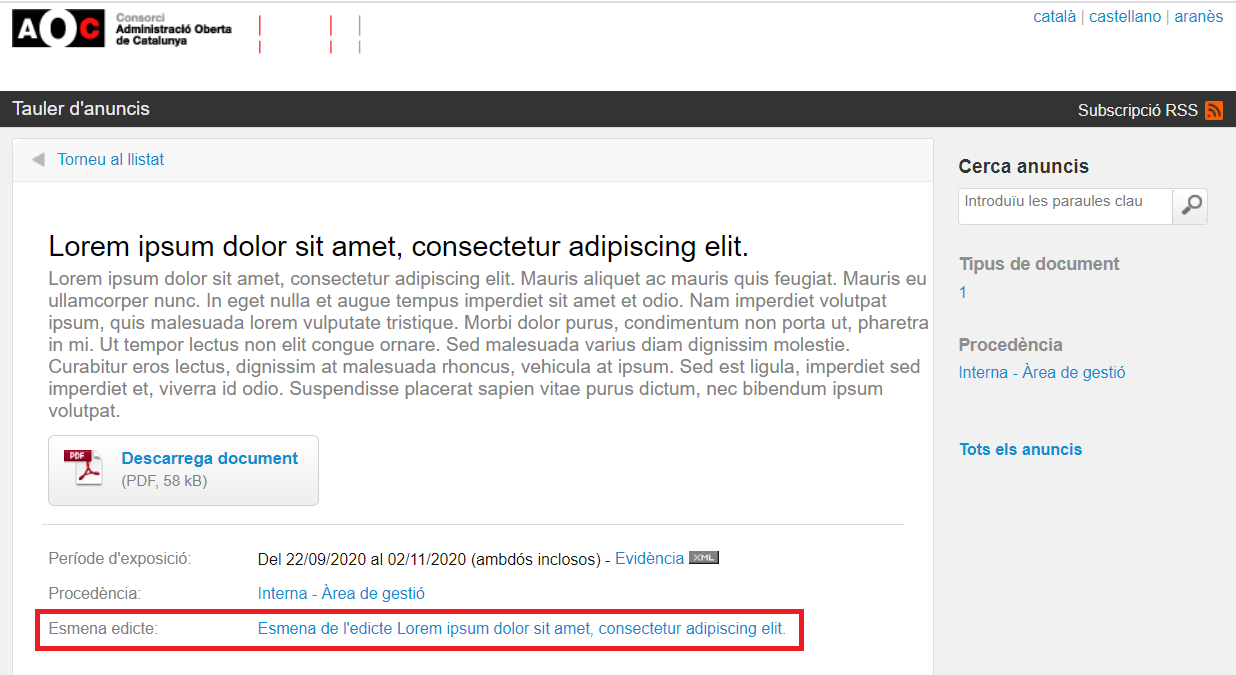Users with the Publisher role have a functionality that allows them to amend a published announcement:

This functionality makes a copy of the original ad, which inherits all of the original information: title, dates, file, description, ad document, and classification elements.
The title appears by default preceded by the text Amendment to the ad + the title of the original ad .
All fields in the original ad can be modified. Therefore it is also viable to indicate the fact that the edict contains "personal data" and therefore will not appear publicly in the history section:
A new field called Reason for the amendment is added where the reason for making an amendment and what it consists of must be explained.

Once the Reason for amendment field has been completed and any modifications deemed appropriate have been entered, the advertisement amendment can be sent for publication and, once published, replaces the original advertisement visible in the public part of the e-TAULER, in the first instance. However, the original announcement remains accessible via a link available at the footer of the amendment:

Once located in the original announcement, we can return to the amendment by clicking on the corresponding link also located at the foot of the original announcement:

Several successive amendments may be made. The last amendment made is the one that will be visible in the public part in the first instance and you can navigate through the amendments using the links available at the foot of the announcement.
Upon removal, either manually or automatically, of either the original advertisement or any of its amendments, all linked advertisements are removed.
In the event that an amendment is scheduled with a period of public exposure that exceeds that of the initial announcement, it will be necessary to extend the latter in order to coincide with that of the amendment (v. 4.1 point 6). Otherwise, when the initial announcement is withdrawn, the amendment will also be withdrawn.
By being withdrawn, each of the announcements, whether the original announcement or any of its amendments, generates its own and independent due diligence with its corresponding electronic evidence.